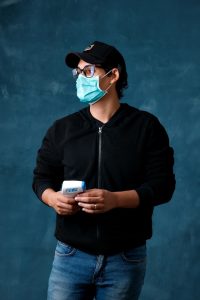Introduction Responding to a Global Pandemic – The Role of K-12 Science Teachers (COVID 2020)
Introduction
Across the US, tens of thousands of science teachers have been doing their best to answer student questions about coronavirus and COVID-19.1 For biology/life science teachers, the moment presents a powerful opportunity to engage students in the science of viruses and how to prevent their transmission. But it is not just biology teachers who have been fielding student questions. It is also high school chemistry and physics teachers, middle school general science teachers, and elementary teachers. The vast majority of K–12 students interact with a science teacher daily or almost daily, much more frequently than with a health professional. Thus, when a global health crisis emerges, students of all ages turn to their science teachers for information and, at times, reassurance. In this way, science teachers become a critical part of the nation’s response to a public health crisis.
 In the spring of 2020, Horizon Research, Inc. (HRI) received support from the National Science Foundation to study how science teachers respond when urgent science-related issues such as COVID emerge and what guides their responses to these issues. The study addressed the following research questions:
In the spring of 2020, Horizon Research, Inc. (HRI) received support from the National Science Foundation to study how science teachers respond when urgent science-related issues such as COVID emerge and what guides their responses to these issues. The study addressed the following research questions:
1. Where do K–12 teachers of science get their information about COVID, and what types of resources do they find most useful? What resources do teachers need but not have access to?
2. What factors influence whether and how science teachers address COVID in their instruction?
3. How have science teachers adapted their teaching in response to COVID, whether viruses and disease transmission are part of their curriculum or not? How is their instruction similar to and different from their typical instruction?
The study was motivated by interest in helping teachers respond to this and the next such public health crisis. Findings about where teachers get their information, what formats are most useful, and how they use the information have the potential to help education and health organizations target their dissemination efforts so schools can serve as an outlet for accurate information and resources. Additionally, findings about factors that influence teachers’ decision to teach about these types of situations can help school leaders and policy makers consider school contexts that are supportive of science instruction that has a timely and real-world focus.
1Throughout the remainder of this report, we will use the term “COVID” to refer to both the virus and the disease. However, we will use the individual terms if we are specifically referring to one or the other.
The Theory of Planned Behavior
Understanding what factors influence teachers’ decisions about whether to address COVID was a focus of the study given the role science teachers play in disseminating accurate information during a public health crisis. Thus, this aspect of the work was situated within the Theory of Planned Behavior (TPB) (Ajzen, 2012), a prominent and comprehensive framework in social psychology for understanding human behavior.
The TPB holds that three types of beliefs indirectly influence behavior: behavioral beliefs, normative beliefs, and control beliefs. Beliefs regarding the expected outcome of a behavior, along with subjective values about the outcome, influence an individual’s attitude toward the behavior. A science teacher may believe that addressing COVID will alleviate student concerns. If the teacher attaches a positive value to this outcome, then the teacher’s overall attitude toward teaching about COVID may be positive. However, the same teacher may also believe that addressing COVID will take time away from topics that are included in their curriculum and on state-mandated tests. If this belief and the associated value of the outcome are strong enough, they may outweigh perceived benefits, and the teacher may have an overall negative attitude toward teaching about COVID. Normative beliefs, or what individuals believe influential others will think about them if they exhibit the behavior, combined with motivation to comply, form a subjective norm. For example, if a teacher works in a school or district where administrators support teachers addressing COVID, and if the teacher is motivated to comply with administrators, then the teacher may have a positive subjective norm toward this behavior. Finally, an individual’s ability to engage in a behavior has to do with factors both internal and external to the individual. The individual’s perception of the presence of these factors, along with the perceived power of each factor, constitute control beliefs, which shape the individual’s perceived behavioral control. For instance, if a teacher does not have the content knowledge (an internal factor) or access to resources (an external factor) for teaching about COVID, the teacher may have low perceived behavioral control.
Attitude toward a behavior, subjective norms, and perceived behavioral control influence each other and together shape an individual’s intention toward the behavior. Intention, combined with actual behavioral control, predicts the likelihood of the behavior. To the extent that perceived behavioral control is accurate, it can serve as a proxy for actual behavioral control in predicting behavior. Figure 1 represents these relationships graphically.

